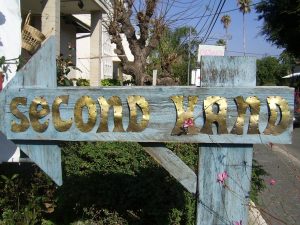
Consignment is defined by Merriam-Webster dictionary as “goods sent to a person or place to be sold.” You have most likely heard of this term before. In fact, you probably have been a part of it at some point. But, did you know there are different ways this process works?
Consignment stores are a great way to make money for your unused goods. These second-hand shops exist throughout the country, both online and offline, with inventory provided by consumers. As it happens, Amazon and Ebay are also actually considered consignment shops.
However, while the concept of consignment is simple, each store is not created equally. Usually, as someone providing goods in exchange for money, you will be paid either up front or through sharing a portion of the profit with the owner.
What is up-front payment?
When paid up front, you receive payment immediately for your goods based on what you have that can be resold. A price will be in place for certain items, and what is actually taken not only depends on the relevance for the shop but also the condition. Based on the pre-determined prices for products and what they keep from your pile, you will be offered cash or in-store credit.
Whatever is left can be brought to another consignment outlet to see if someone else will take it before giving up. Remember, each one is not created equally. Just because one shop did not value your items does not mean another will not.
The negative about getting money right away is that you may not receive the best price. You won’t receive as much as they will sell the items for, which is how they make a profit. So, what other options do you have? This brings us to our next payment method: profit sharing.
What is profit sharing?
Profit sharing involves collecting compensation for your goods after they’ve been sold. A price is set on the items as it is normally and sold directly in the store. You’ll share profits of your materials sold as agreed upon with the seller, and you can choose to receive cash or store credit as you would with the up-front payment. Generally, you won’t have to pay any fees in order to sell in someone’s place, but some do charge what is known as a consignment fee or entry fee.
You’ll gain more through profit sharing, but it could take a while to get all your money though. Thus, what route you choose to take depends whether or not you need cash right away or you can wait.
The varieties of consignment
Shops can exist physically, virtually or even be just a weekend event. These weekend sales act as pop-ups in a temporary space, where people pay an entry fee to attend or a fee to sell. The benefit of these consignment sales is that people tend to sell more than what they would in a shop. On the other hand, if you only have a few small items to sell, this is probably not worth your while.
If you are looking to sell items in a consignment shop, just make sure your pieces are in good condition and clean. Additionally, you may want to research niche markets to see if your goods will sell better in a more focused industry. From furniture to books and clothing, there is usually a concentration for everyone, both as a seller and buyer.
Do you love consignment shops? Would you recommend selling in them?
Comments